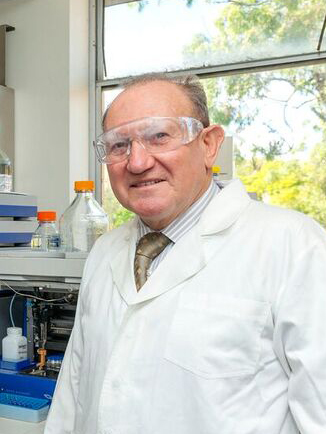A recent discovery about the role of debranching enzymes in starches will have major implications for nutrition and human health, according to Professor Bob Gilbert, Research Professor at the University of Queensland.

Professor Gilbert, who divides his time between the University of Queensland in Brisbane and China’s College of Agriculture, Yangzhou University, is one of Australia’s most cited polymer chemists. He heads a research program that centres on the relations between starch and glycogen structure, and nutrition, diabetes and obesity.
He says the discovery is the culmination of more than 10 years of work. While the first set of data came out in 2015, it wasn’t until almost 12 months later that the implications of their findings became clear.
Professor Gilbert’s group have used a range of new experimental and theoretical techniques to understand what it is about the structure of starches that influence their digestibility.
Starch and glycogen are both highly branched glucose polymers, with very similar chemical structures. Starch is synthesized by plants for energy storage, and also provides about 50 per cent of our food energy. Humans and other animals synthesize glycogen as a glucose (blood-sugar) reservoir.
Foods with a low glycaemic response and resistant starch have major health benefits, so there is considerable interest in developing novel techniques to slow down starch digestion. Rapidly digested foods are implicated in the development of a range of ‘modern’ diseases including type 2 diabetes, obesity and colorectal cancer.
“For more than a decade we have been asking ourselves questions about the structural characteristics of starches,” Professor Gilbert says. “We know that starches with somewhat longer branches are digested more slowly. However while you can develop a rice variety that is very slow to digest, the problem is that it tastes horrible. People won’t eat it willingly unless they are diabetic and they absolutely have to.”
Professor Gilbert and his team have been using their data and very advanced theory to develop a novel transgenic way of making plants that are very close to natural or wild type, but which are slower to digest. The first of these plants is now growing under controlled conditions in China.
“These new methods will open doors to a greater understanding of starch and glycogen properties, which in turn will aid researchers in the development of foods with a more favourable digestibility profile,” he says.
The team has made recent further breakthroughs in understanding the reason for the variability in amylose chain length in mutant plants compared to wild type plants. The researchers previously thought that debranching enzymes in mutant plant varieties were redundant. However they now believe that this variability provides a certain robustness for germination.
“High environmental variability is not something that is good for plants in their ecological niche,” Professor Gilbert says. “What we have uncovered has allowed us to understand some of the biological driving forces, as well as a new method for fitting amylose data. We have learned something about biological function and we are about to learn a great deal more.”



